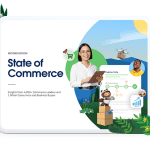Marketers are emerging from a time of great upheaval, optimistic about new opportunities as they lean on technology and data-driven insights. Even more interesting -account-based marketing (ABM) is becoming an important part of their strategy. According to Salesforce’s 7th State of Marketing report, 79% of organisations are using ABM now.
Particularly popular among B2B marketers, ABM accounts for about 15% ofmarketing budgets today, notes the report. As customer behaviour continues to evolve and expectations rise, marketers are having to double down on critical investment and opportunity areas. In this context, having a laser-sharp focus on ABMmakes sense.
But first, what is account-based marketing?
ABM approaches each key account as a separate market and its relevant stakeholders as individual audiences.



Here’s the 3-point technique that sets apart account-based marketing:
- Identify high-value accounts
- Engage with decision-makers and influencers in these accounts through highly targeted and hyperpersonalised marketing campaigns, content, and messaging
- Move them to conversion faster

How to get started with account-based marketing
The key to survival in 2022 and beyond is the ability to adjust to rapidly changing market conditions and client expectations. Though ABM is relatively new, it has gained widespread acceptance, becoming a cornerstone of overall marketing strategies, according to the State of Marketing report.
But ABM programmes are still maturing and there’s substantial room for improvement. Fewer than half of the marketers surveyed in the Salesforce 7th State of Marketing report were completely satisfied with various aspects of their programmes. These include a lack of internal collaboration due to siloed teams, digital skills to leverage technology, and cross-functional alignment that impact personalisation capabilities.
So, how can one get ABM right to help marketing, sales, and services teams work together towards success?
Here’s a 5-point approach for you to make the most of ABM quickly:
1. Identify big-ticket accounts: Prod your sales teams and figure out which are the accounts (existing clients who present an opportunity to upsell your services/solutions) you need to focus on.This set of clients are now your key ABM accounts.

2. Map key stakeholders: Now that you know who your key accounts are, the logical next step is identifying the ‘influencers’ and ‘decision-makers’ within these accounts. Is there a buying committee? Is there a process? What is your relationship with this buying committee?
While you’re at it, align your internal marketing, sales, and customer service teams. All of you should be pursuing the same metrics and goals, and have the same unified view of your customers.
3. Develop one-to-one campaigns: The information you get should help you understand where each stakeholder stands in the customer journey. Are they a strong advocate of your brand? Are they happy with the services provided? Once such key points are addressed, you can design your communication strategy to hook the stakeholder with a highly personalised campaign (includes messaging and content assets).
4. Identify the right communication channels: Not everyone likes emails but what if that email was accompanied by a personalised note from the CEO thanking the customer for a previous purchase? This is sure to strike a chord. Having such a personalised approach for key account stakeholders will help to build deep and long-term engagement. Not to mention that the email click rate will be a lot higher. You could choose email campaigns, virtual or live corporate events, social media, etc. to communicate your personalised message and content.

5. Track and measure ABM success: Across sales, services, and marketing teams, the tracking of account-based marketing and metrics to define success should be the same. The focus of ABM is never volume; rather, engagement quality and conversion rates. At all times, your account-based marketing strategy needs to consider the entire account’s buyer journey and not individual audiences’ alone. For instance, tracking the number of times the client has come back to you seeking your service or showed interest in exploring other services? Have they referred you to another company? By gauging the engagement quality and conversion rates, your teams (marketing/sales/customer service) can closely collaborate to ensure closure, and then, retain and grow such clients. 
Revisit your account-based marketing strategy with the 7th Salesforce Marketing report
Gather insights from the 7th Edition of Salesforce’s State of Marketing report to grow your existing high-value customers. Remember, ABM doesn’t stop at closing deals. ABM is strategic in nature, and not a tool alone.
Download and read the report to understand how otherB2B marketers are leveraging ABM to open new business opportunities and more such marketing insights.

























